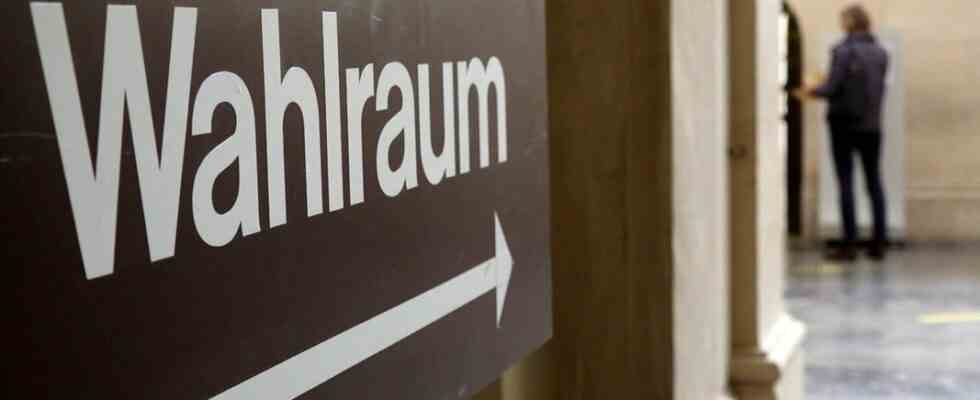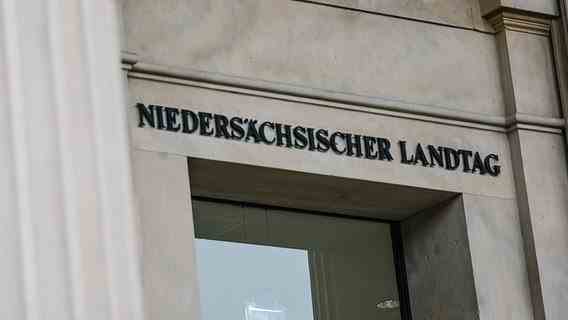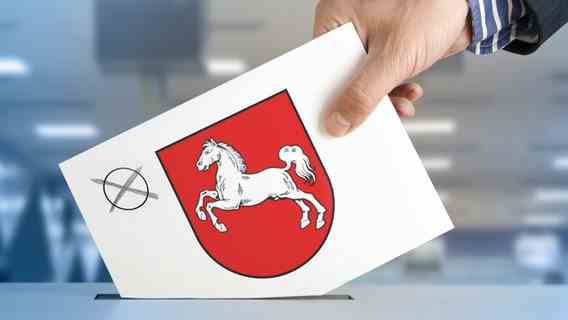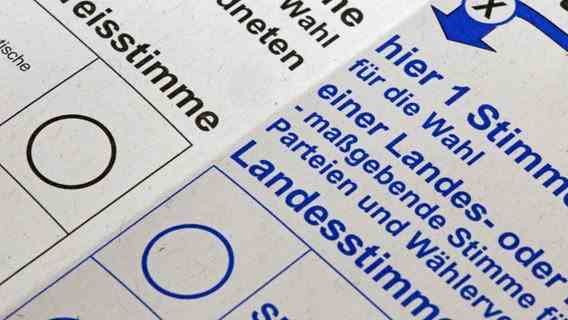Status: 09.10.2022 08:00 a.m
Here we go: Anyone who has not yet voted by post can now vote for the state elections in Lower Saxony at the polling station – until 6 p.m. Suddenly sick people can also choose.
Almost 6.1 million Lower Saxony are called to vote – that is almost 76 percent of all residents of the state. Among those entitled to vote are around 215,000 young voters who are allowed to vote in a state election in Lower Saxony for the first time. Some municipalities had already reported in advance that many people were once again casting their votes by post. The corona pandemic, which had led to long queues in front of the polling stations in some places with rules such as the distance requirement, gave postal voting a boost. According to the state election management, there are no corona measures in this election, only the recommendation to wear a mask in the polling station, to keep your distance and to observe the known hygiene measures.
Voting is also possible in the event of a sudden corona infection
Anyone who develops corona symptoms on Sunday or suddenly gets another illness that prevents them from going to the polling station does not have to give up voting. The infected person is not allowed to go to the polling station himself – because they have to comply with the quarantine rules. However, according to the state returning authority, you can still apply for postal voting documents up to 3 p.m. on the day of the election. To do this, she must explain in writing why she cannot go to the polling station herself – for example because she is in quarantine. With this declaration and a written power of attorney, a person of trust can then go to the electoral office responsible for the sick person – this is usually the town hall or citizens’ office, not the polling station. The power of attorney must state the name, address and date of birth of the person entitled to vote and it must be personally signed by the person concerned. The person collecting the goods must also be named on the power of attorney with their name and date of birth. The completed postal voting documents must then be received by 6 p.m. at the latest at the municipal address given on the ballot envelope – not at the polling station. No power of attorney is required for submission.
Who is eligible to vote?
German citizens who are 18 years of age or older on the day of the election and who have been registered as permanent residents in Lower Saxony for at least three months are entitled to vote in the state elections. They are each allowed to cast two votes: With the first vote, they choose the direct candidate for their constituency, who is to enter the state parliament, and with the second vote, they choose a party. The decisive vote for the distribution of seats in the Landtag is the second vote. There are 87 constituencies in total.
Further information
23 parties are allowed to vote
23 parties are allowed to vote. 21 of them are running with a state list or direct candidates. In the 2017 state election, 22 parties were allowed to vote and 17 of them ran candidates. A total of 756 people are applying for a seat in the state parliament, including nine individual applicants who do not belong to any party. Around a third of the candidates are women. The Greens are an exception: They are the only party that has more women than men. The youngest applicants in this election are Zara Tas from the FDP and Parmveer Singh from the Humanists – both born in 2003. 85-year-old Peter Jürgen Würdig from the AfD is the oldest applicant in the state elections.
The results of the 2017 state election
The SPD and CDU have been governing together in a grand coalition in Lower Saxony for five years. The strongest force in the last state election was the SPD with 36.9 percent. The CDU was able to unite 33.6 percent of the votes. The Greens came to 8.7 percent, the FDP to 7.5 percent, the AfD to 6.2 percent and the Left with 4.6 percent missed entering the state parliament.
Highest voter turnout in the summer of 1974
Voter turnout in October 2017 was 63.1 percent. It was lowest in January 2008 at 57.1 percent. Voter turnout reached its highest level in a Lower Saxony state election in the summer of 1974 – at that time 84.4 percent of those entitled to vote went to the polls.
Help for spontaneous people – who can you vote for?
Further information
More information on the state elections in Lower Saxony
Further information








